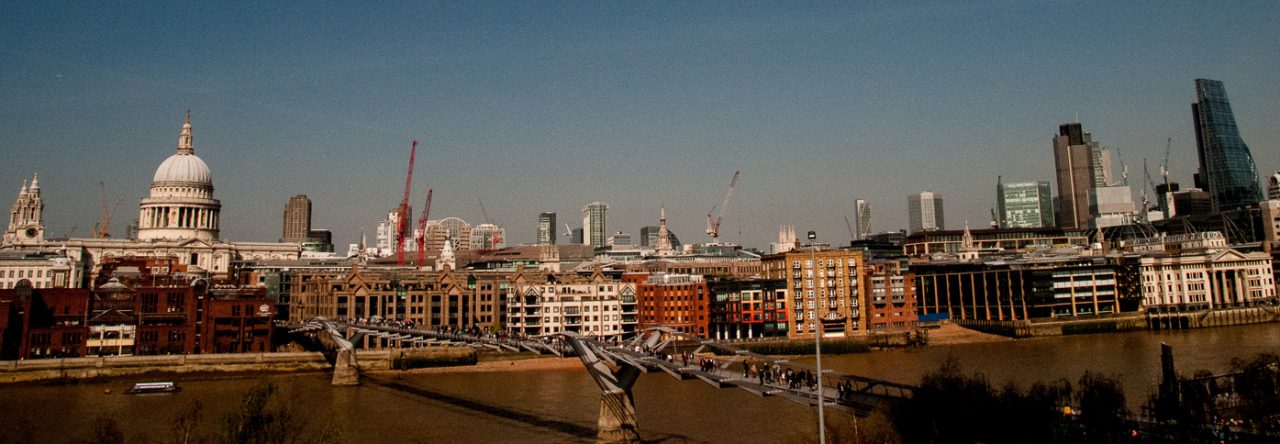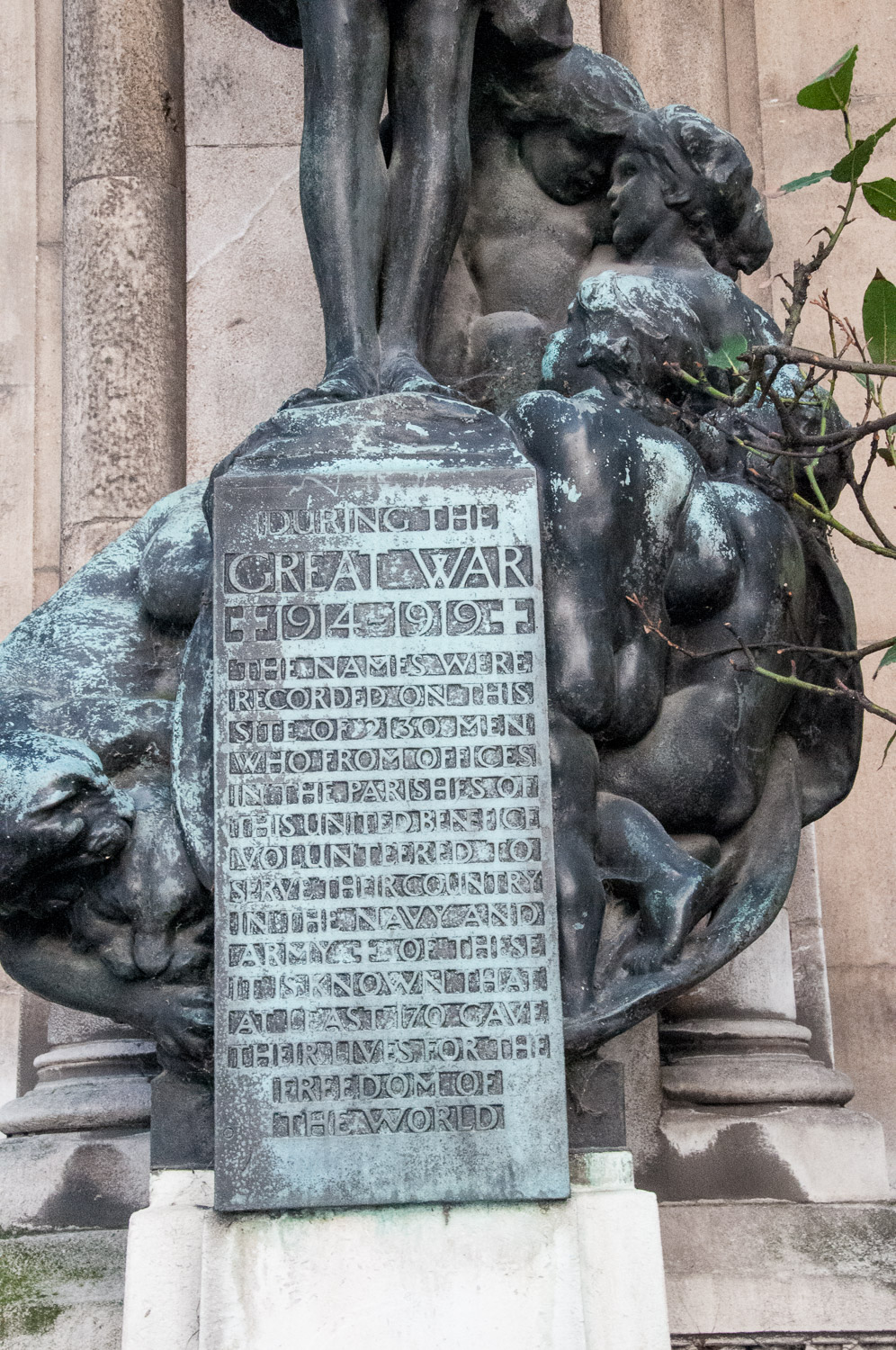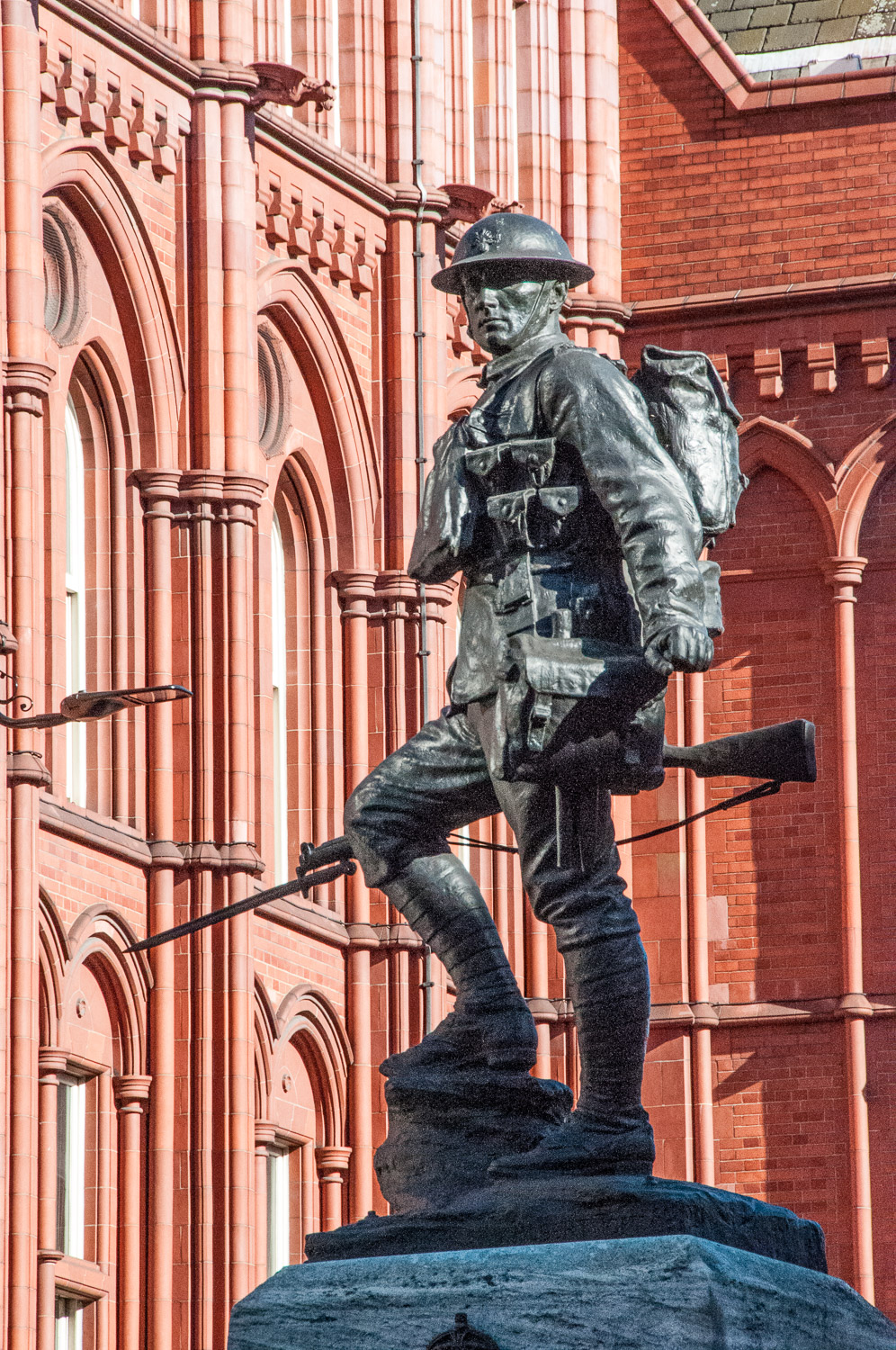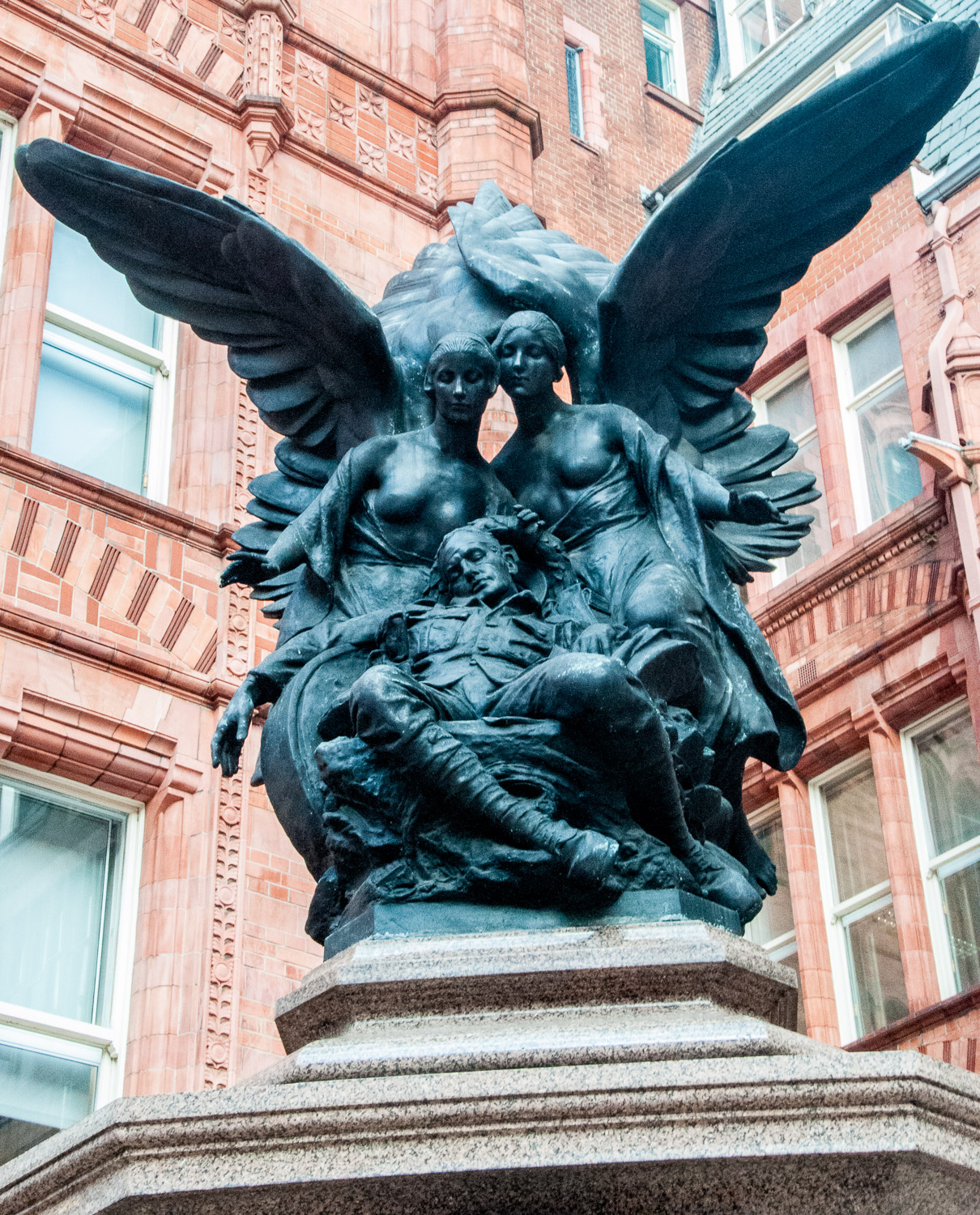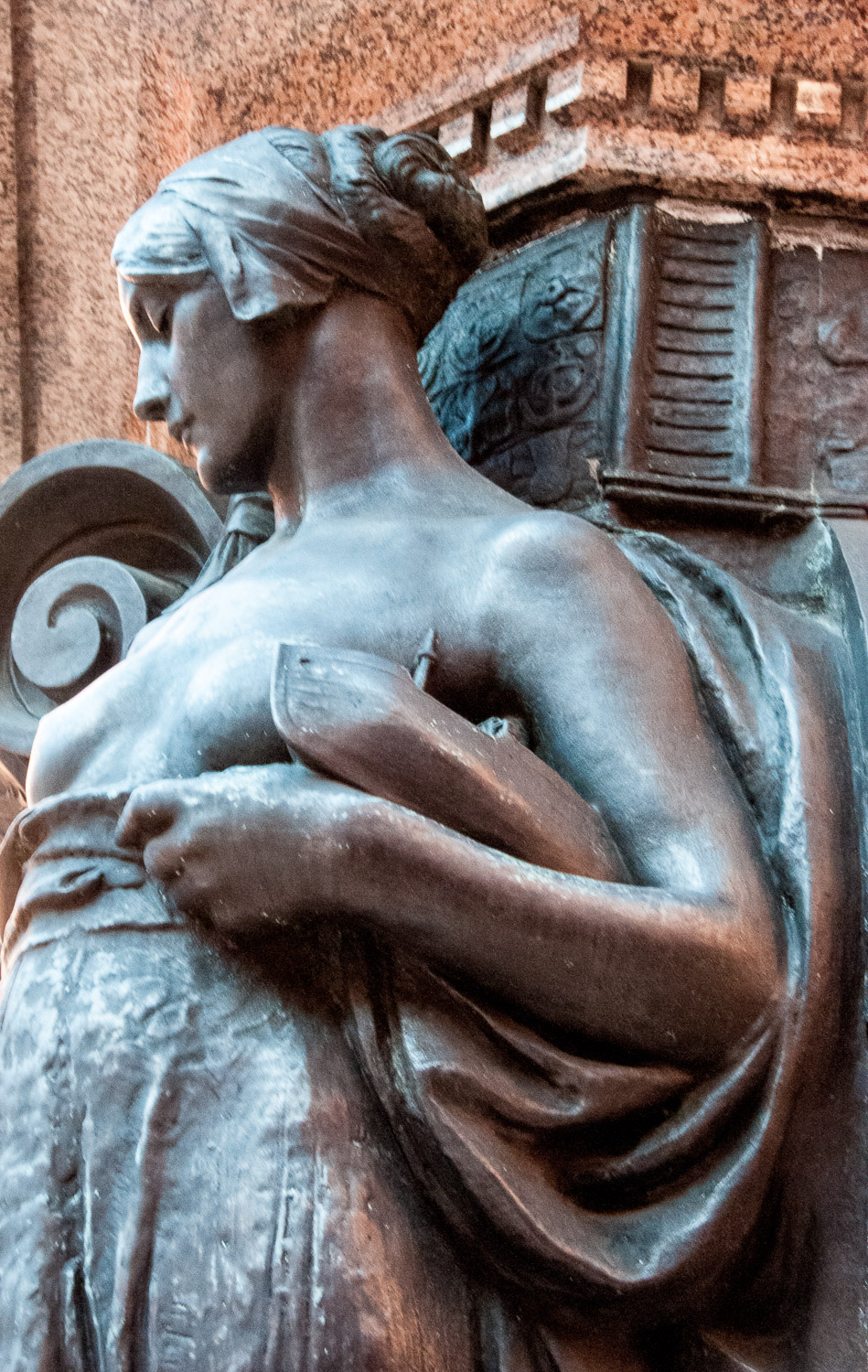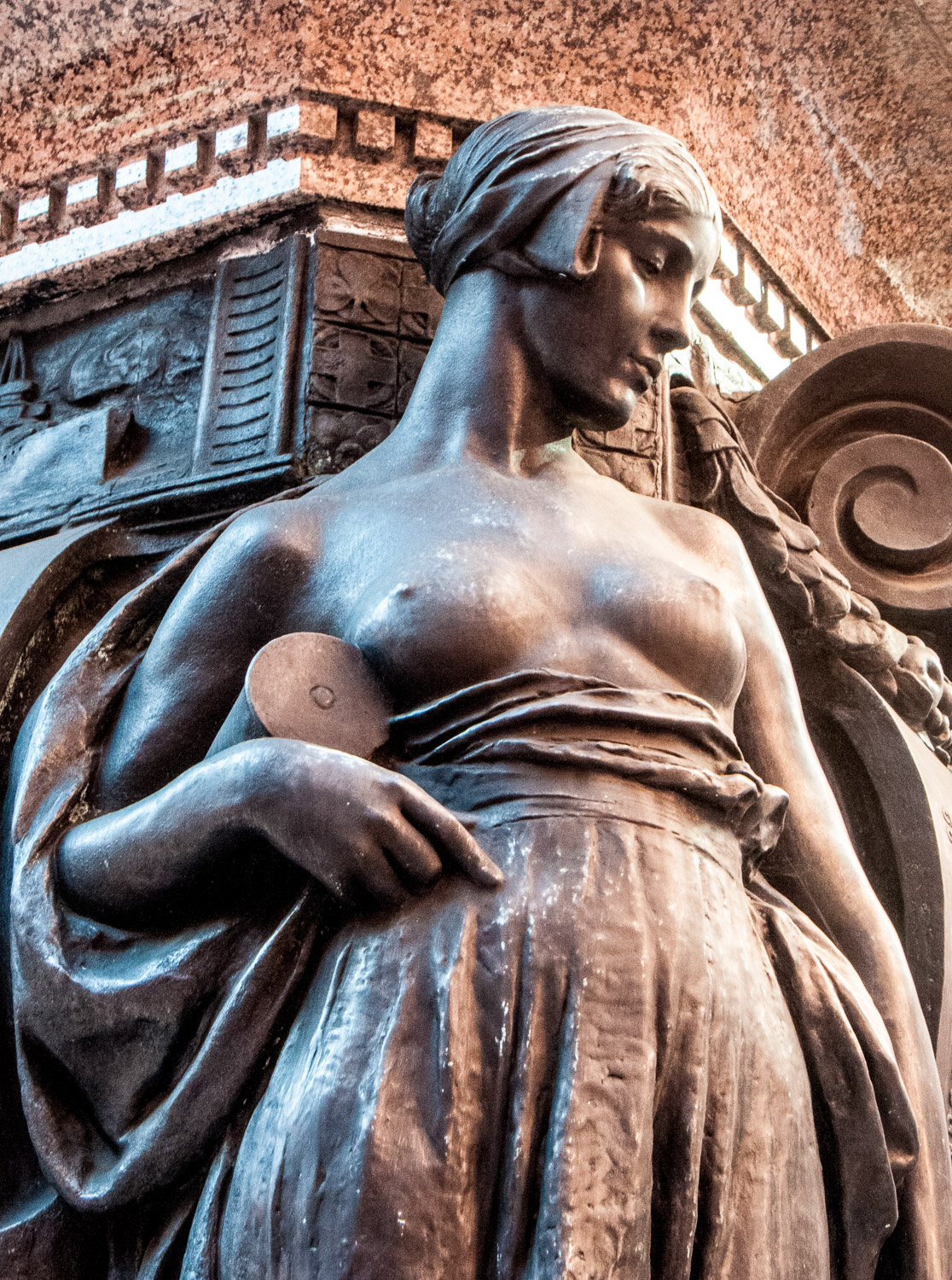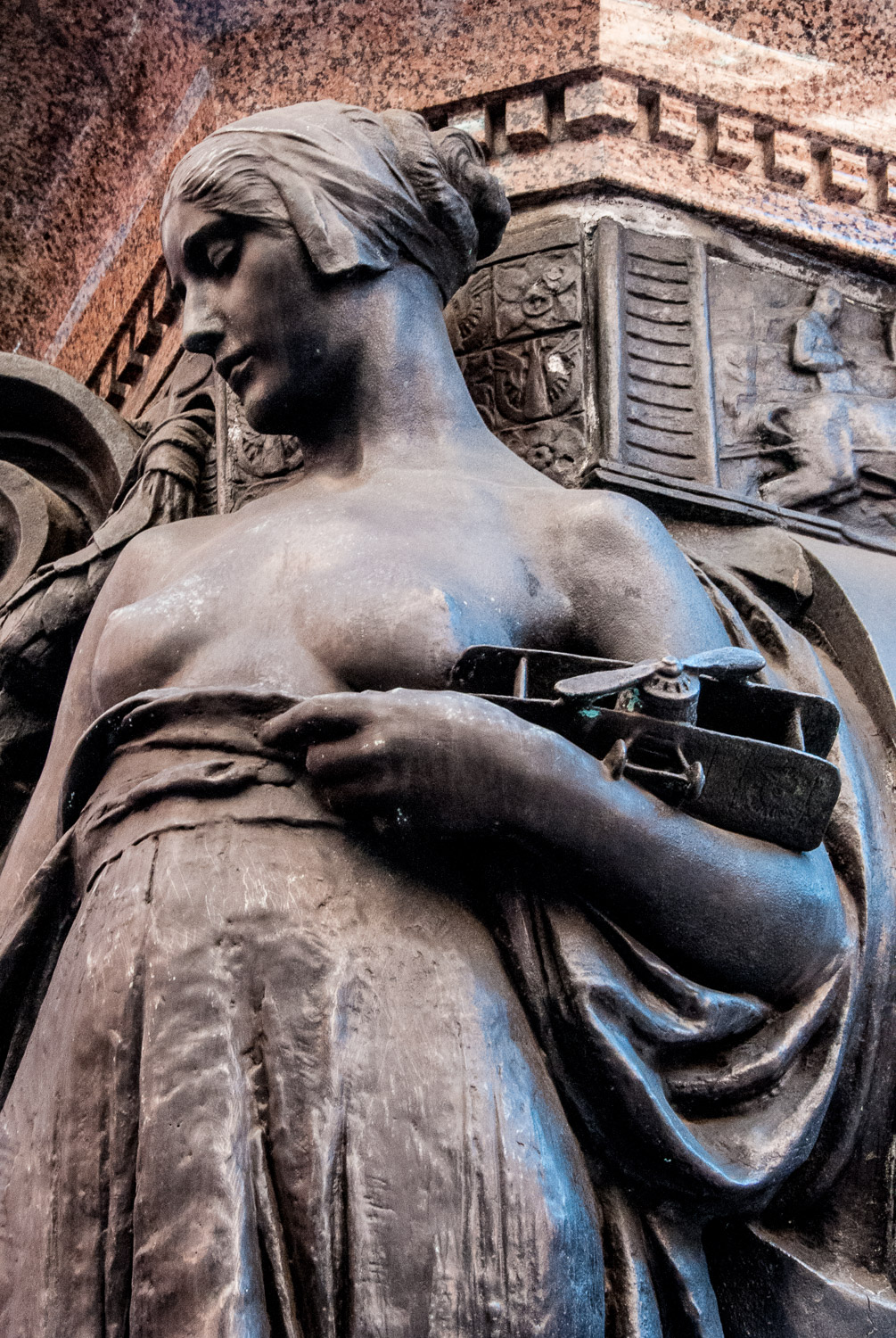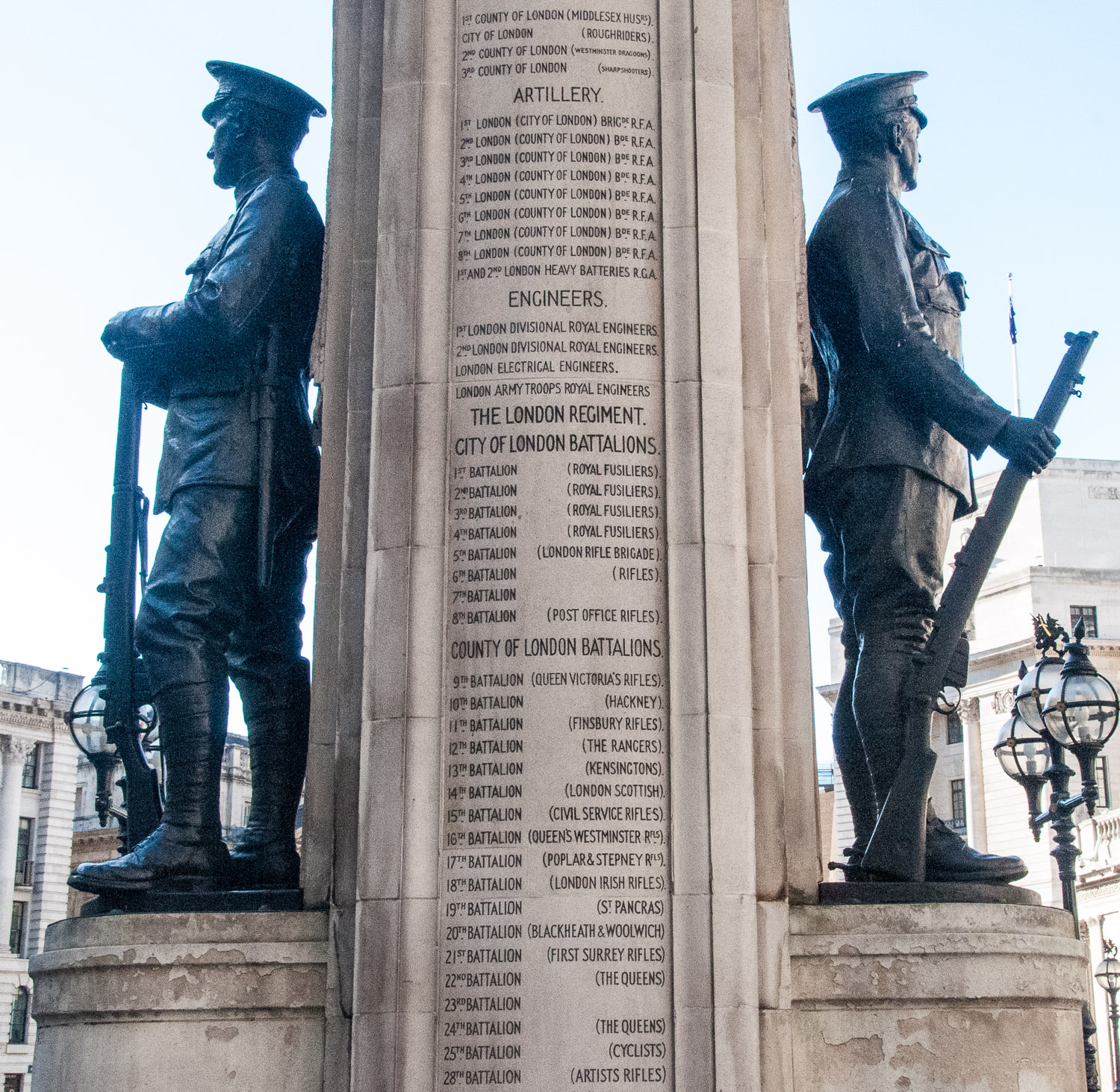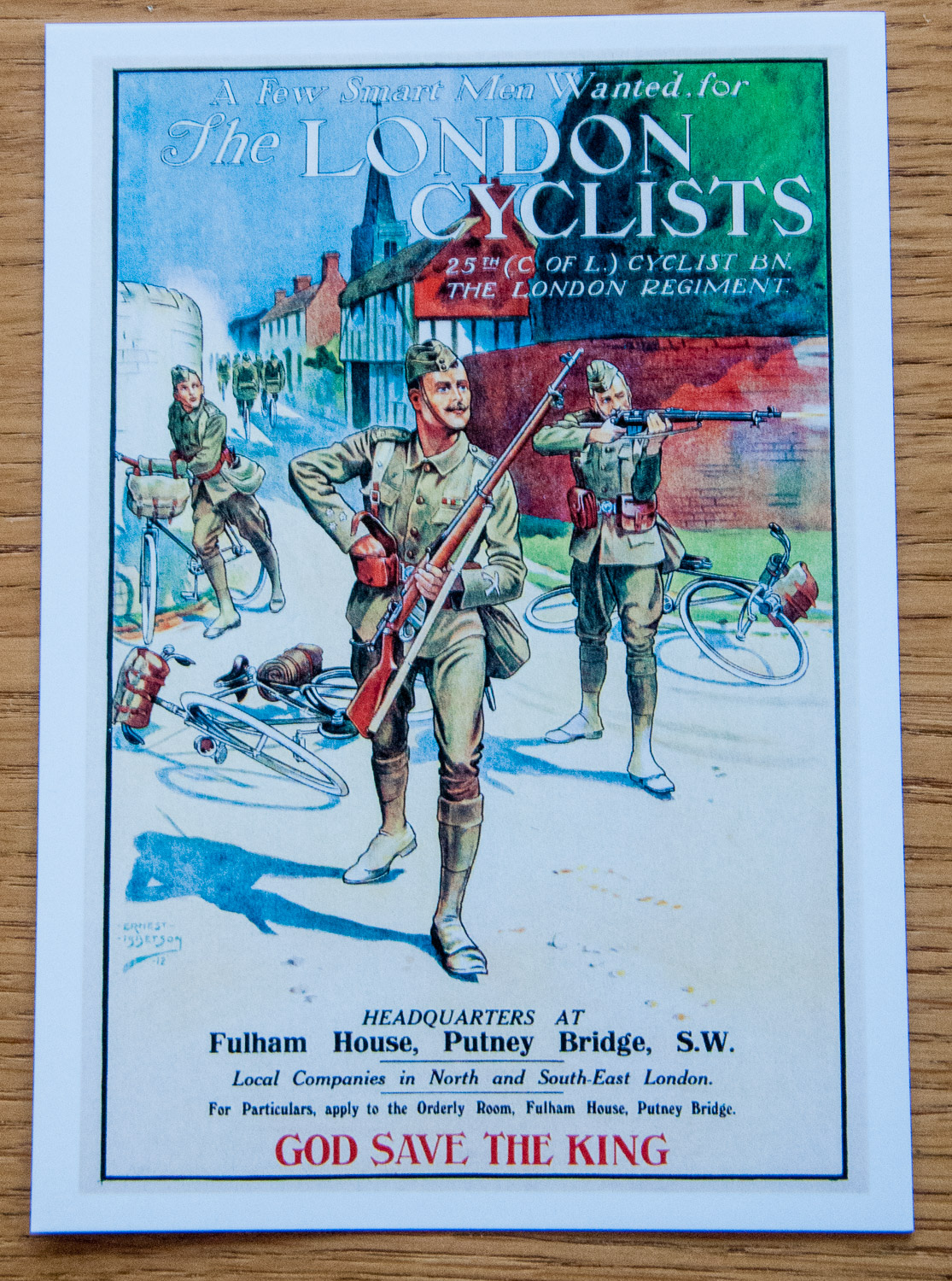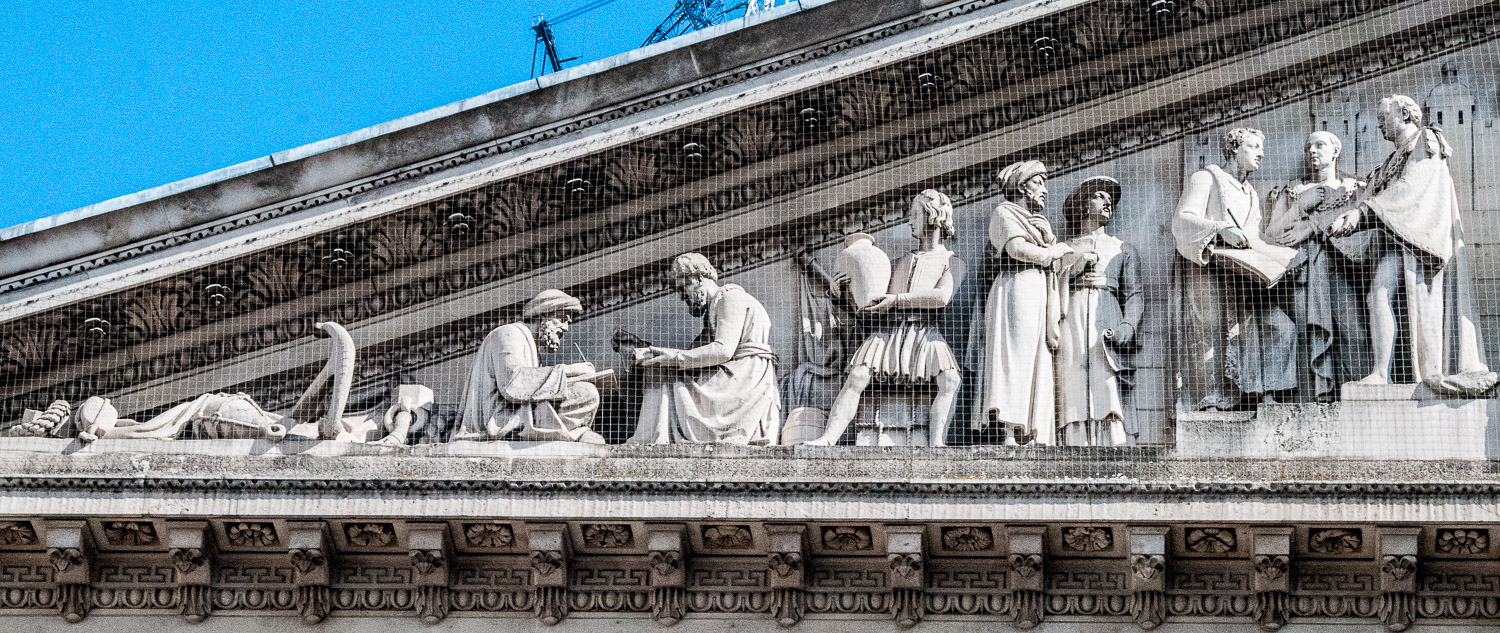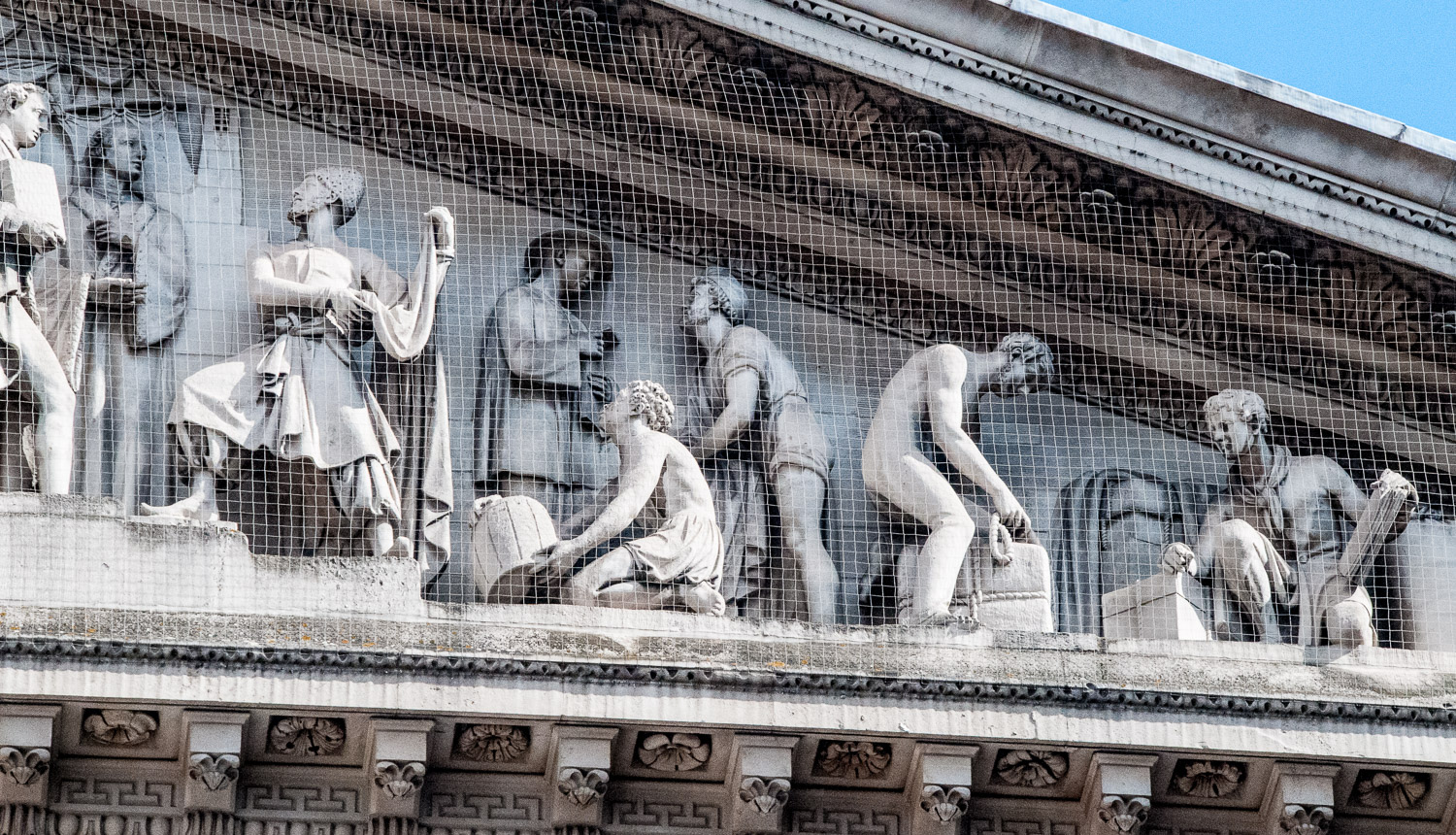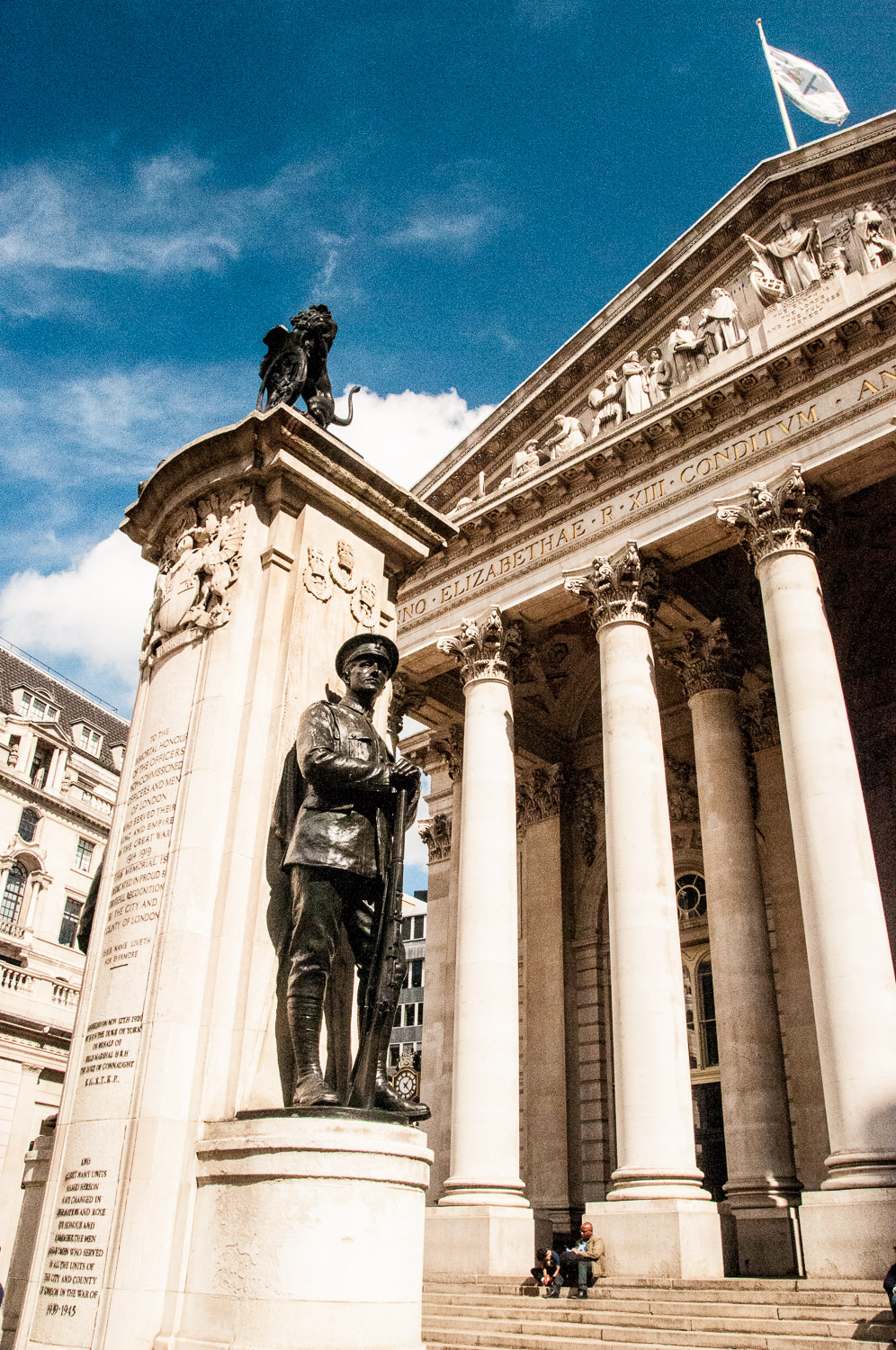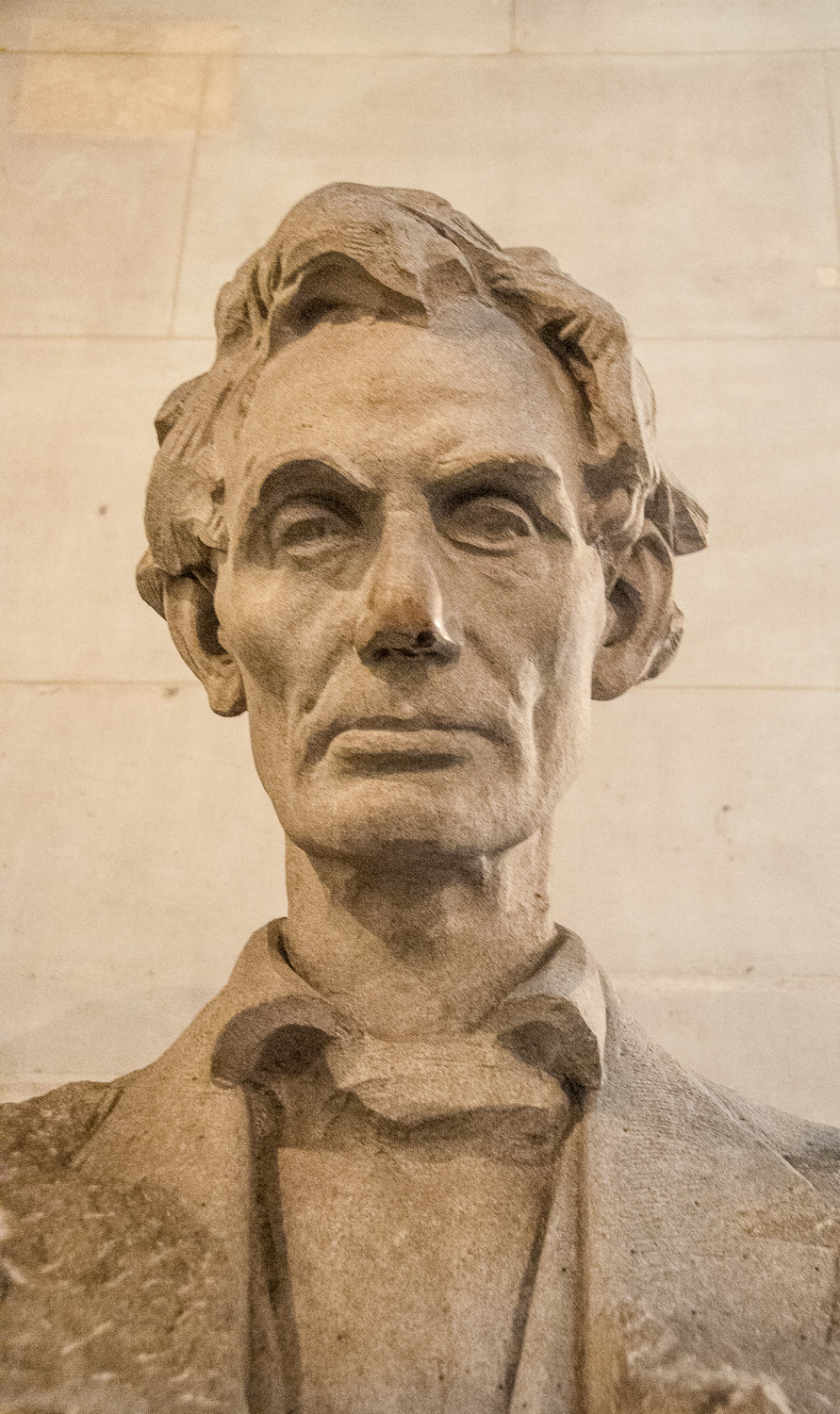Trinity Square Gardens outside Tower Hill underground station is home to a number of memorials, one of which relates to events going back centuries.
In the south east corner and in the foreground of this picture is a circular granite sundial which has a cast iron anchor in the centre which acts as a gnomon …
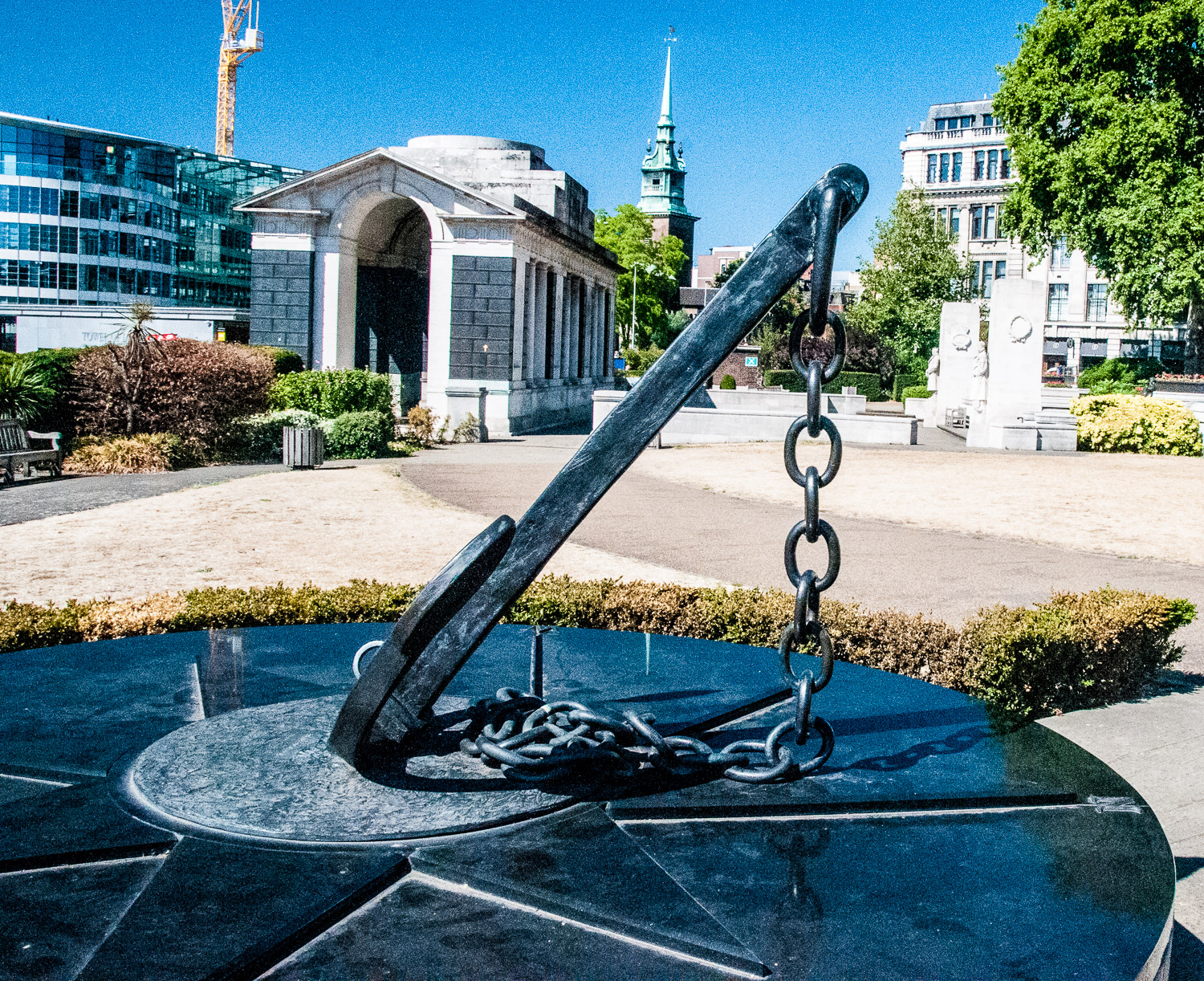
The Falklands War Memorial. Designed by Gordon Newton of War Memorial Limited (2005).
On 2 April 1982, Argentine forces landed in and captured the Falklands Islands. A task force was dispatched in order to retake the territory and this was accomplished when the occupying forces surrendered on 14 June that year. Nine members of the Merchant Navy and eight members of the Royal Fleet Auxiliary were killed in the conflict and their names are recorded here beneath those of their ships …
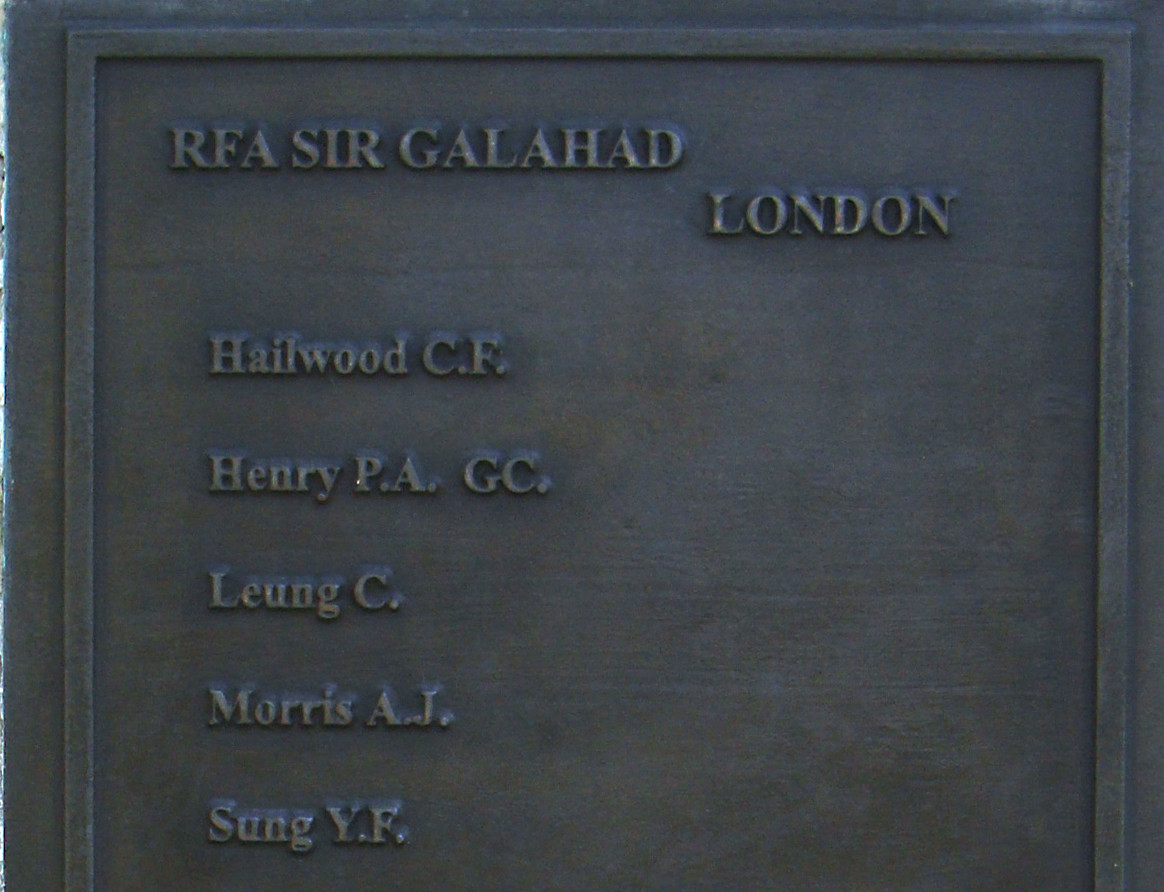
In the main photograph’s background you can see two other memorial structures. On the left are commemorated the 12,000 men of the merchant navy and fishing fleets who lost their lives in the the First World War ‘who have no grave but the sea’ …
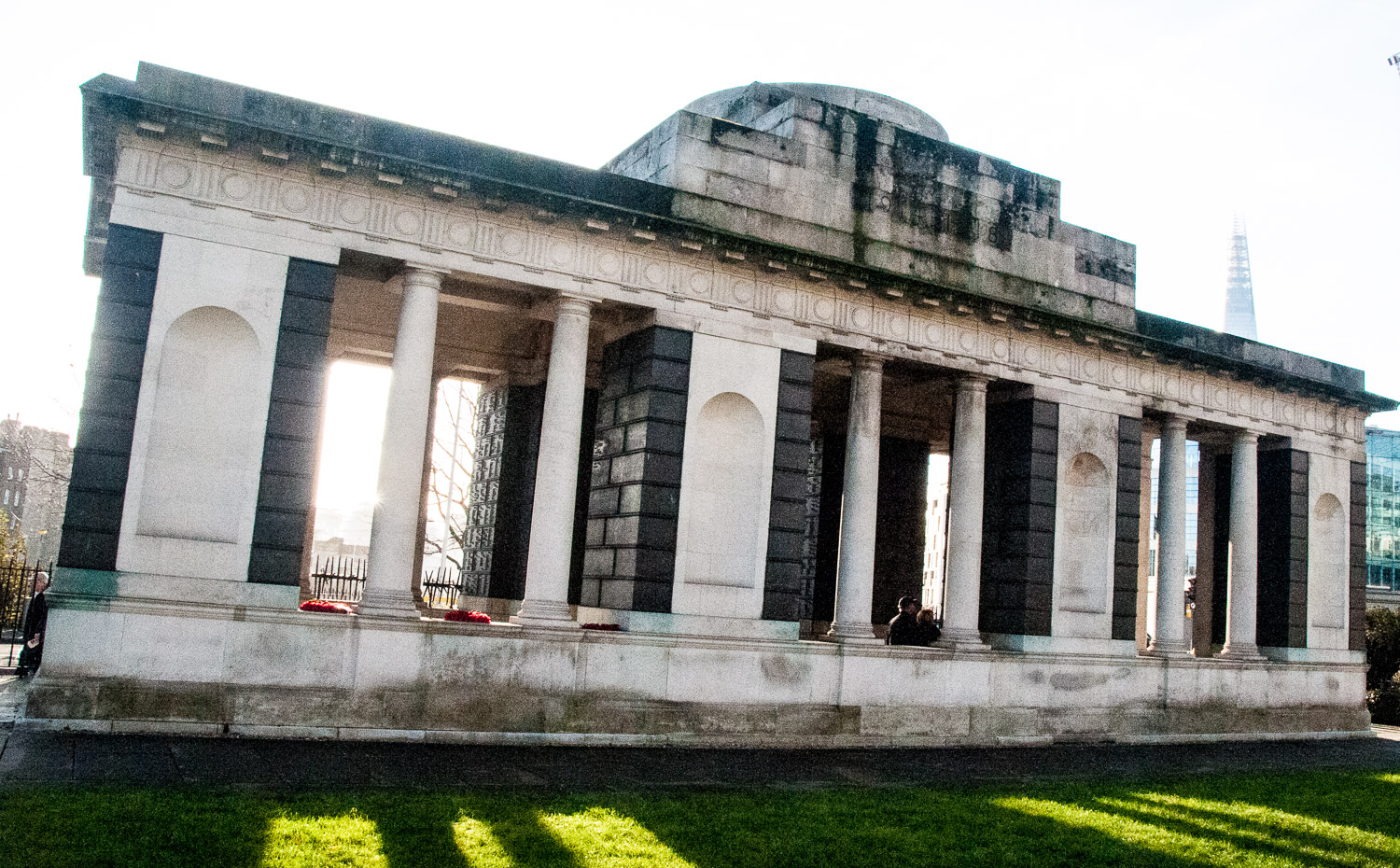
Sculptor: William Reid Dick Architect: Sir Edwin Lutyens.
Made of Portland stone, the walls are covered with bronze panels with the names of the dead arranged alphabetically under their ships with the name of the Master or Skipper first in each case if they were among the lost.
On visiting a few years ago it was clear than many of those unfortunate mariners were still being remembered by family descendants …
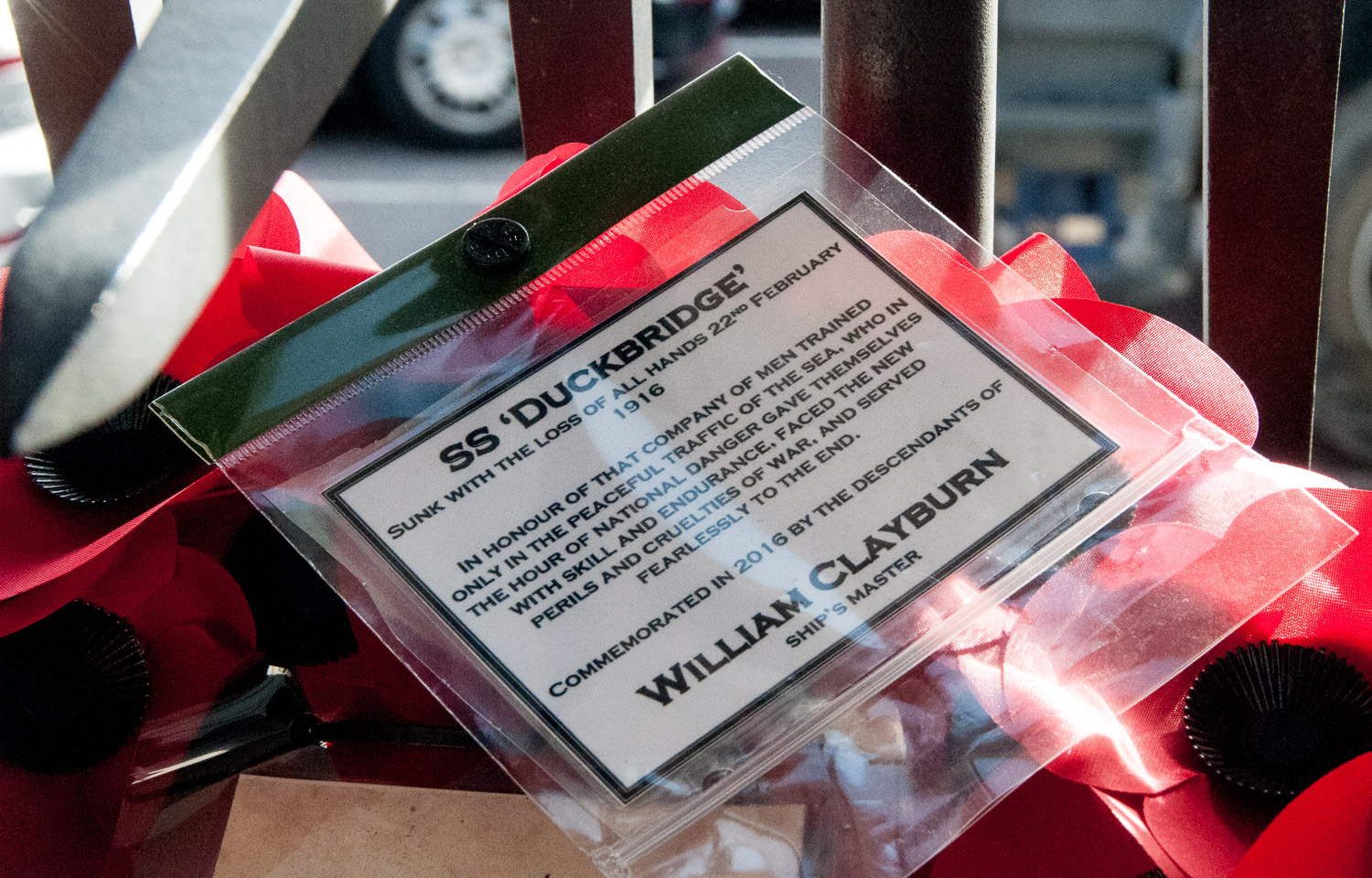

When I first looked really closely at the panels I noticed something strange in one section of the memorial, see if you do too …

At least four of the men, Moyle A.J., O’Mealie J., Kelly T.E. and Pardew C.J. served under names other than those that were registered at their birth. I am trying to research their stories and will hopefully have something to report in my next blog. There is also a ship recorded here that was actually lost in the Second World War – something also for a future blog.
Just to the north is the Second World War memorial to the further 24,000 men lost between 1939 and 1945 …
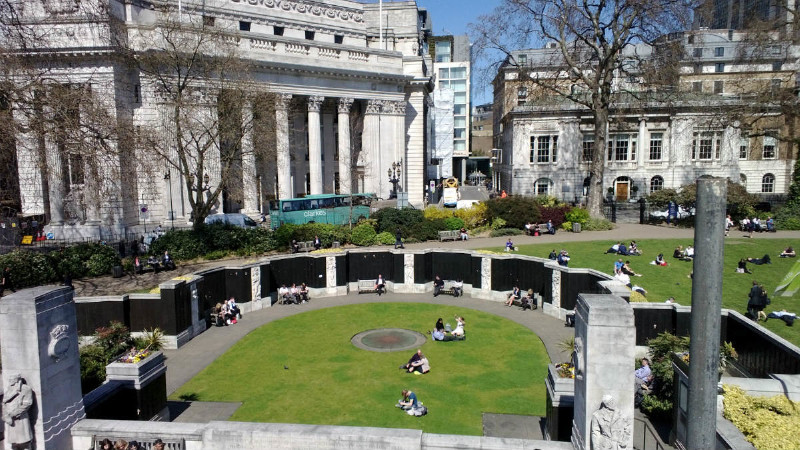
Sculptor: Charles Wheeler Architect: Edward Maufe.
It is a sunken garden with the steps leading down to it flanked by a Mercantile Marine officer …
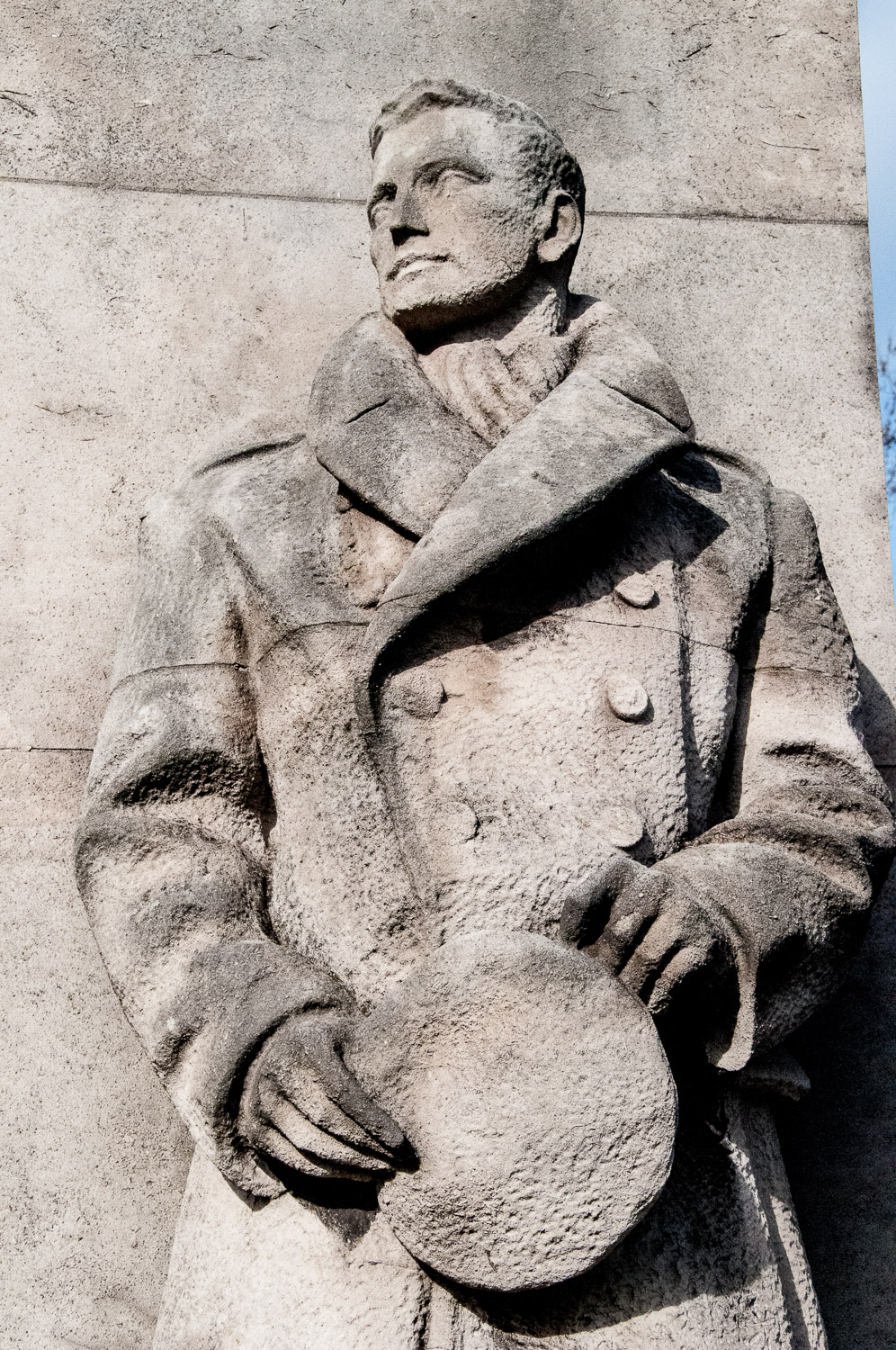
… and a seaman of the Merchant Service. Behind him, in his eyrie above what was once the Port of London Authority building, Father Thames points towards the sea …
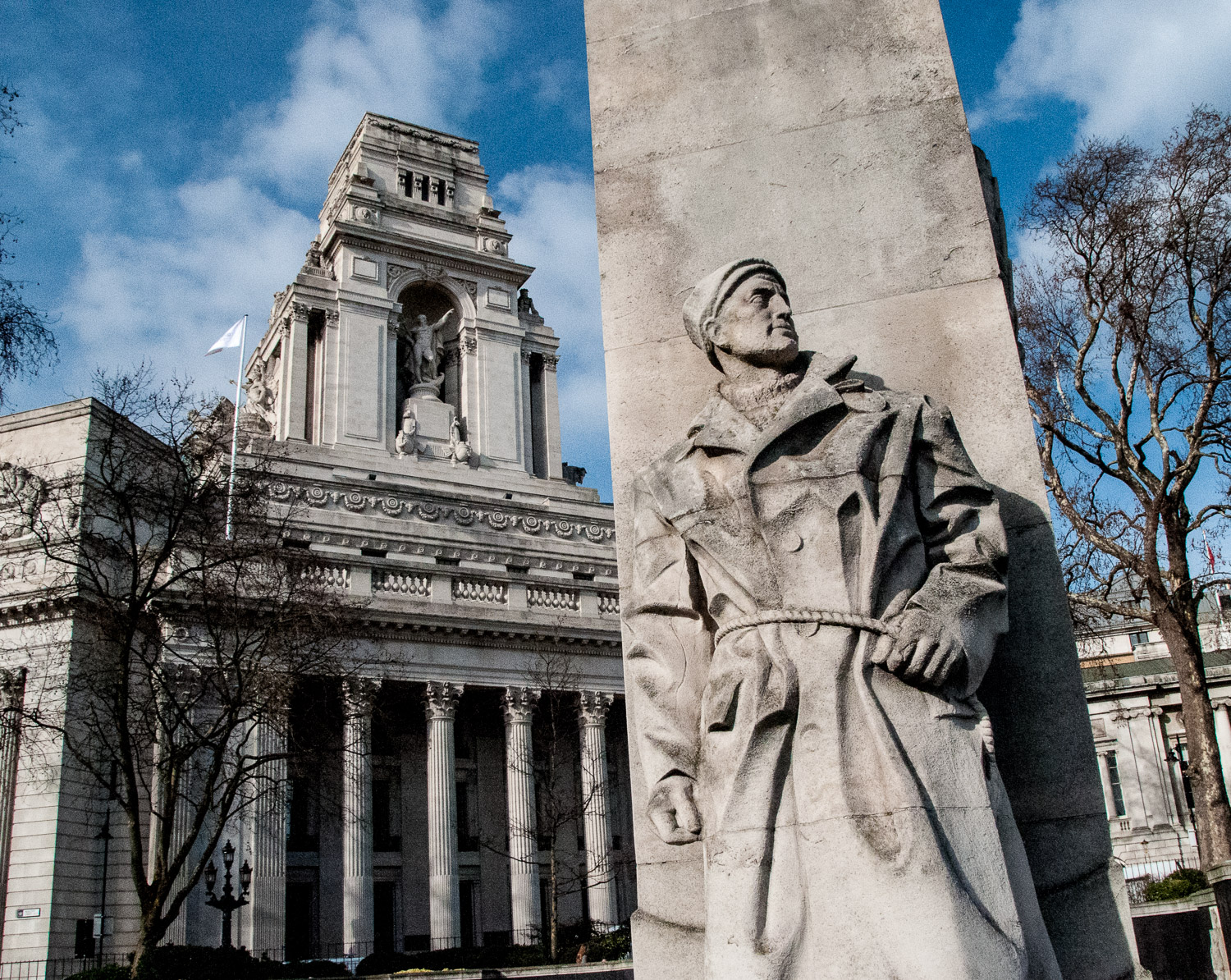
Within the garden the walls are overlaid with bronze plaques on which the names of the men and their ships are inscribed in relief. At regular intervals, between the inscription panels, are allegorical figures representing the Seven Seas. Here is one of them, Neptune with his trident …
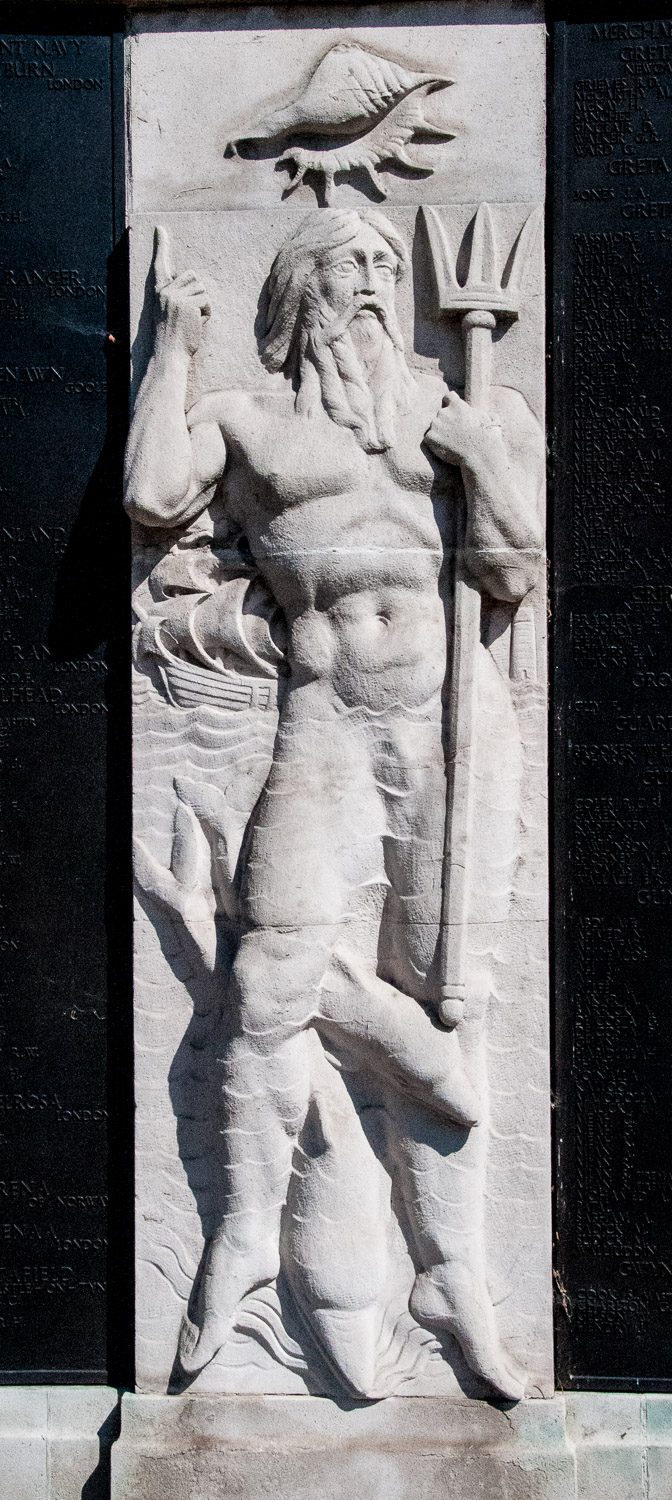
And another, a mermaid combing her hair …
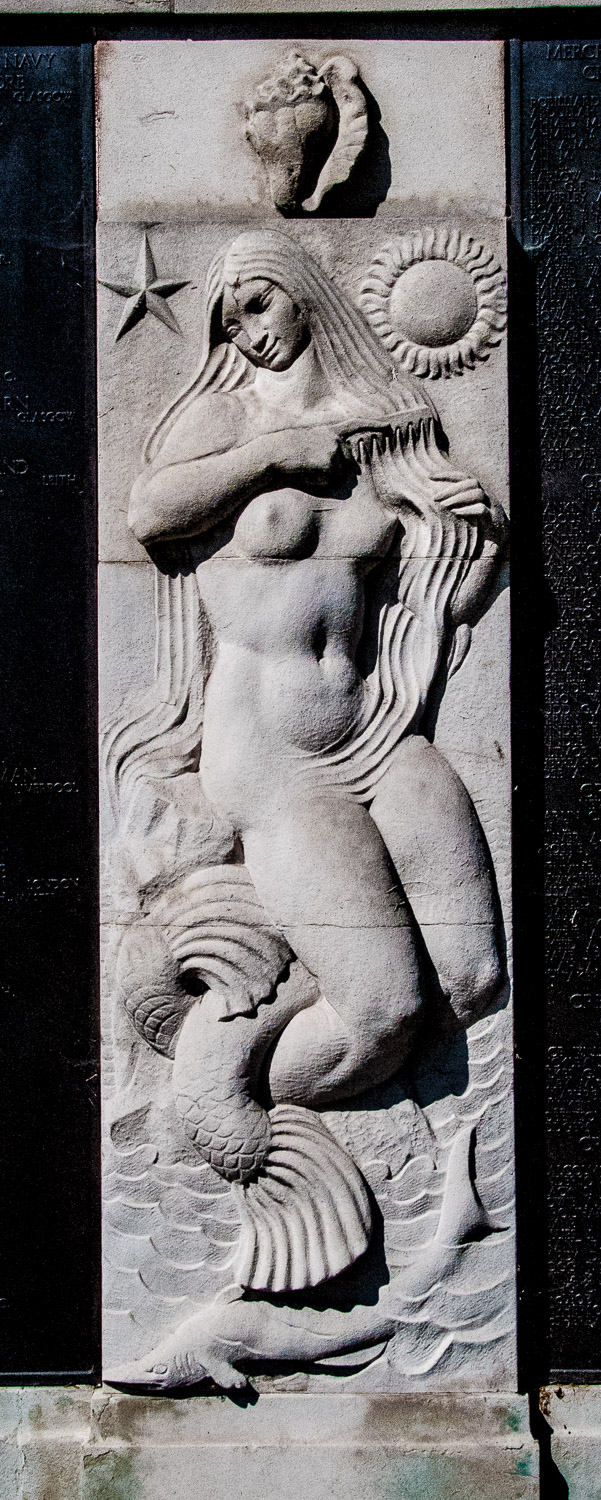
One can’t write about Tower Hill without some mention of its gruesome history as a place of execution …

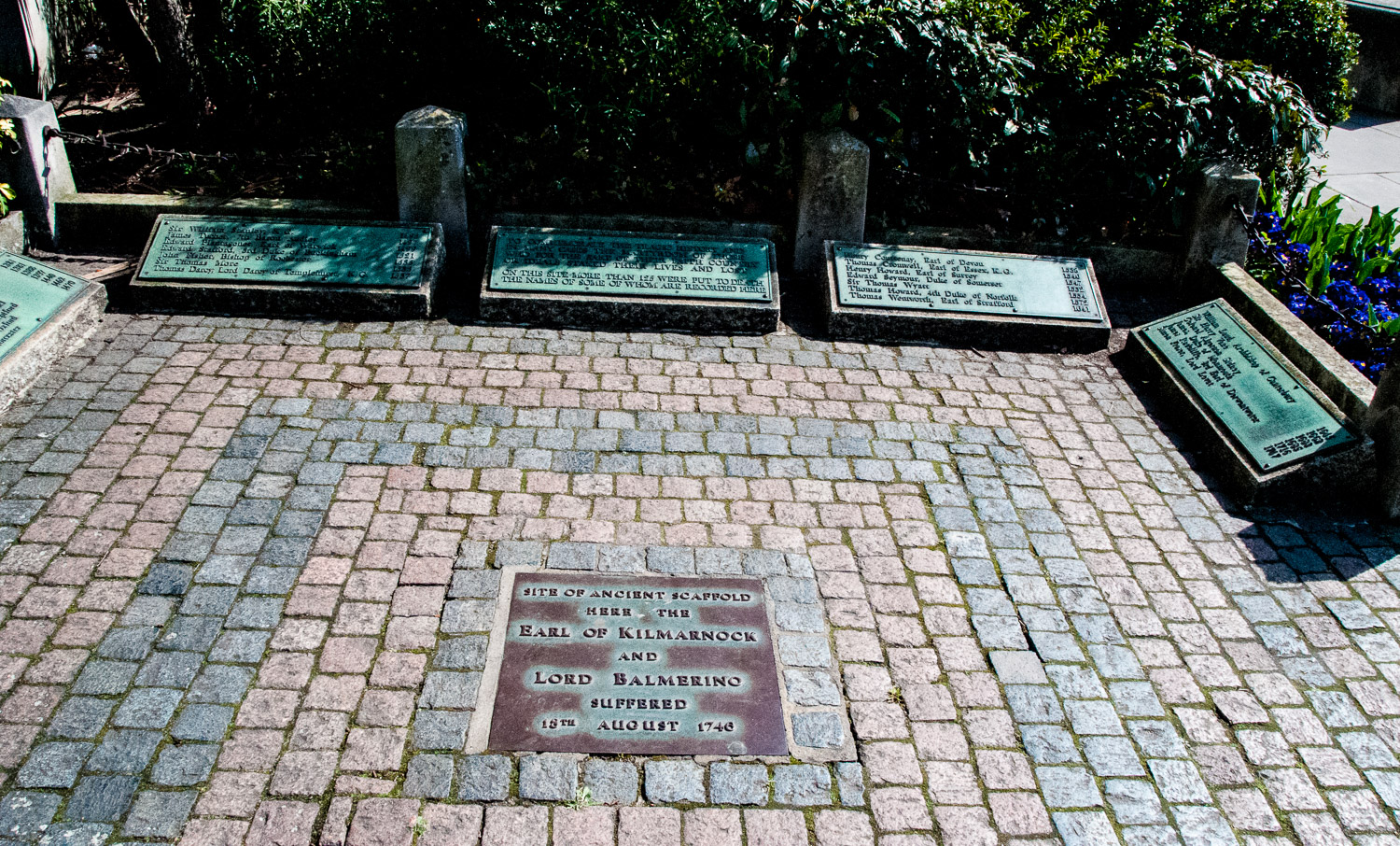
This memorial is located on the approximate site of public executions. Nearby, within the walls of the Tower of London, is Tower Green, where people such as Henry VIII’s unwanted Queens were disposed of more discretely. On 19 May 1536 Anne Boleyn was beheaded there, the deed carried out by a swordsman which ensured a speedy death.
Her old adversary Thomas Cromwell watched her decapitation, but was to end his days on the public gallows a mere four years later on 28 July 1540. The executioner being drunk, his end was a nasty, botched affair. On the same day Henry married his fifth wife, Catherine Howard, but the marriage only lasted a few years until she too was executed at the Tower.
Records are incomplete but the known execution tally for both locations is well over 100 ranging from the first (Sir Simon Burley on 5 May 1388) to the last (three Gordon rioters hanged on 11 July 1780). Two of the Jacobite ‘Rebel Lords’ beheaded for high treason have a special plaque …
Site of the ancient scaffold where the Earl of Kilmarnock and Lord Balmerino suffered 18th August 1746.
In this 1746 etching of their execution, the scaffold on the left is surrounded by horse and foot guards, holding back the throng of spectators, who also watch from tiers erected for the purpose. The executioner is raising the axe above his head …
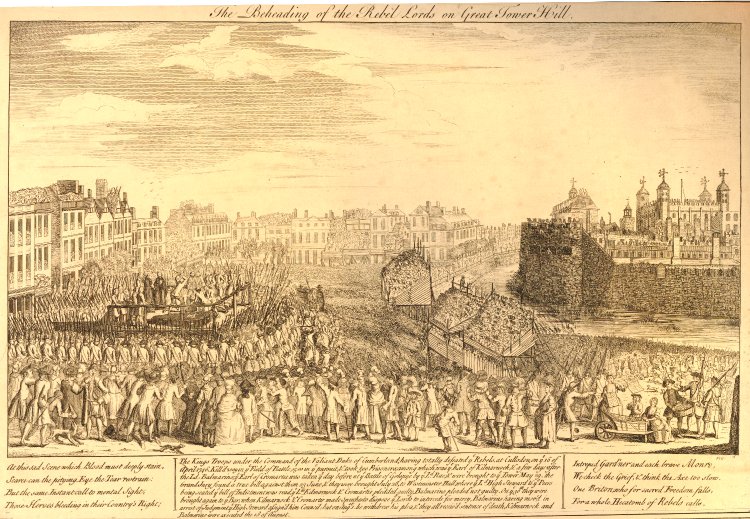
Copyright Trustees of the British Museum.
